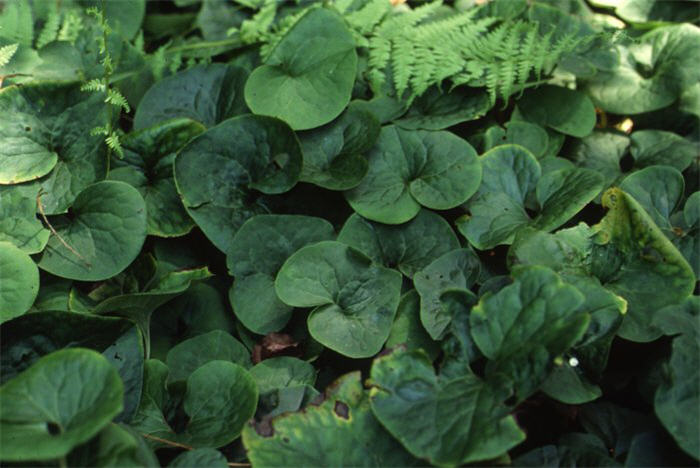| Botanical Name: Asarum canadense | |
| Common Name: Wild Ginger |

-
Anatomy
-
Culture
-
Design
Plant Type
Ground cover, Perennial, Bulb
Height Range
Under 1'
Flower Color
n/a
Flower Season
Spring
Leaf Color
Dark Green
Bark Color
n/a
Fruit Color
n/a
Fruit Season
n/a
Sun
Half, Shade
Water
High
Growth Rate
Slow
Soil Type
Clay, Loam
Soil Condition
Average, Rich, Moist
Soil pH
Acid
Adverse Factors
n/a
Design Styles
English Cottage, Japanese, Tropical, Woodland
Accenting Features
Unusual Foliage
Seasonal Interest
Spring
Location Uses
n/a
Special Uses
Naturalizing, Small Spaces
Attracts Wildlife
n/a
Information by: Stephanie Duer
Photographer: Richard Devine
Photographer: Richard Devine
-
Description
-
Notes
Wild ginger is a mid-west native, growing in rich woods and wooded slopes. A stemless plant with heart-shaped to kidney-shaped, handsomely veined, dark green, basal leaves, 6 inches tall and wide. Cup-shaped, purplish brown flowers (1 inch across) appear in spring on short, ground-level stems arising from the crotch between the two basal leaves. Flowers are quite attractive on close inspection, but bloom singly on or near the ground and are usually hidden from view by the foliage. Although not related to culinary ginger (Zingiber officinale), the roots of this plant produce a scent that is similar. Fresh or dried roots were used by early Americans as a ginger substitute, but the plant is not normally used today for culinary purposes.
Grow in average, well-drained soil, in part to full shade. Prefers soils high in organic content and somewhat moisture retentive. Spreads slowly by rhizomes to form an attractive ground cover for shade areas. Usually planted as a rhizome in the fall. Hardy to USDA Zone 4; our alkaline soils and hot, dry summers are its challenges, not our winters.